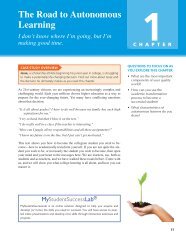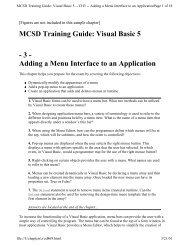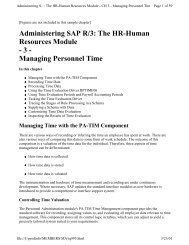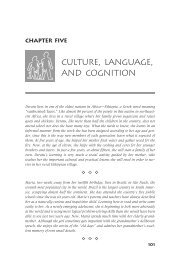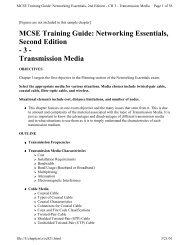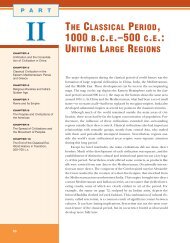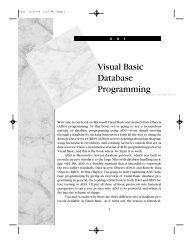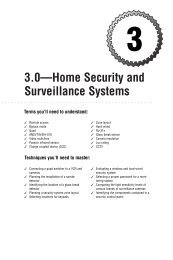Special Edition Using SAP R/3, Third Edition
Special Edition Using SAP R/3, Third Edition
Special Edition Using SAP R/3, Third Edition
You also want an ePaper? Increase the reach of your titles
YUMPU automatically turns print PDFs into web optimized ePapers that Google loves.
<strong>Special</strong> <strong>Edition</strong> <strong>Using</strong> <strong>SAP</strong> R/3, <strong>Third</strong> <strong>Edition</strong> - CH 3 - Exploring R/3 Architecture Page 8 of 26<br />
The most versatile configuration employs three levels of client/server distributed processing.<br />
In the core of the system is a high-speed network of R/3 database servers. The R/3 applications are<br />
networked around the database cluster and have independent access to it. The R/3 applications are<br />
fully integrated with each other.<br />
User access to any of the applications--and hence to any of the database servers--is mediated by an<br />
outer network of presentation servers that form the R/3 front-end systems, where they can be<br />
integrated with PC tools and subsystems. Figure 3.1 shows a triple-level client/server configuration.<br />
There is not a strict interpretation of level in this context, which could be referred to as multilevel<br />
client/server configuration.<br />
FIGURE 3.1 Triple client/server configuration.<br />
Even Loads<br />
Any user can be in touch with several application servers at the same time. In some areas, you might<br />
need to balance the load by installing specialized application servers. The following areas, in<br />
particular, are often served by systems optimized for their differing requirements:<br />
SD-Sales and Distribution<br />
FI-Financial Accounting<br />
HR-Human Resources Management<br />
Front-end and back-end computer systems are subject to different cost structures. The client/server<br />
architecture allows an economical deployment of computing resources by separating the three server<br />
levels.<br />
The advantage is experienced by the user in the form of generous computing resources for the display<br />
and prompting services that make the work easier and more effective. This can be seen in contrast to<br />
older systems, which had to compromise between the costs of presentation support systems and the<br />
cost of providing adequate central system resources.<br />
From the corporate point of view, the economy of providing specialized database servers allows a<br />
generous allocation of storage and processing resources to maintain extensive reference data and full<br />
historical information down to the business transaction detail level.<br />
Heterogeneous Platforms<br />
The <strong>SAP</strong> system has been designed to cope with change, including change in the hardware and<br />
operating systems. Therefore, the new <strong>SAP</strong> implementation must expect to integrate with the legacy<br />
of database and presentation platforms and operating systems that have been serving the company<br />
prior to the business process reengineering.<br />
For example, an R/3 installation can consist of the following assembly of heterogeneous platforms, in<br />
any combination:<br />
file://J:\prodinfo\MEMBERS\MA\ir057.html 3/23/01



